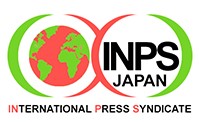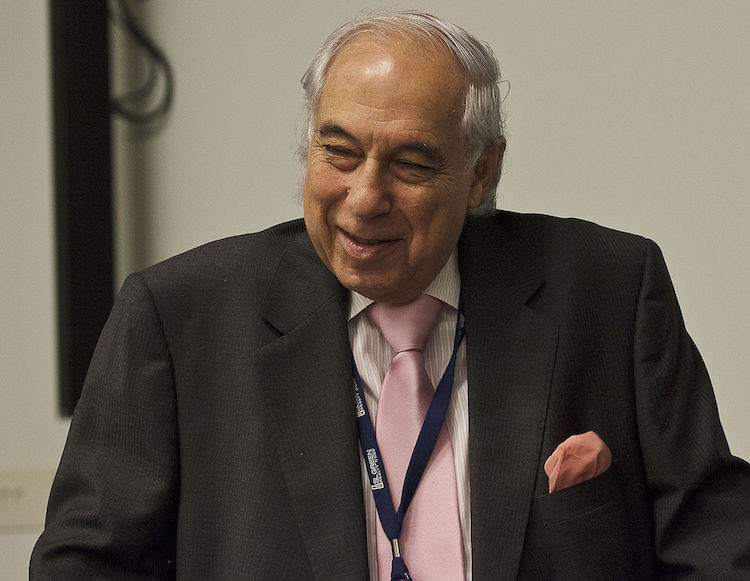Viewpoint by Sergio Duarte

Ambassador Sergio Duarte is President of Pugwash Conferences on Science and World Affairs, and a former UN High Representative for Disarmament Affairs. He was president of the 2005 Nonproliferation Treaty Review Conference.
NEW YORK (IDN) – The forthcoming 50th anniversary of the entry into force of the Treaty on the Non-proliferation of Nuclear Weapons (NPT) provides the opportunity to look for lessons to be learned from its history and from its review cycles. [2019-06-17 | P07] CHINESE | ITALIAN | JAPANESE TEXT VERSION PDF | RUSSIAN
The experience gained in the fifty years of the existence of this instrument should be taken seriously by all members of the international community. Progress in nuclear disarmament is an essential element to prevent further erosion of the existing disarmament and non-proliferation architecture.
It is useful to start by recalling General Assembly Resolution 2028(XX). Adopted unanimously in 1965, it set out the principles on which the negotiation of the NPT should be based. According to that resolution, the Treaty to be negotiated should not permit its parties to proliferate nuclear weapons, directly or indirectly, in any form; that it should embody an acceptable balance of responsibilities and obligations of nuclear and non-nuclear Parties; and it should be a step toward the achievement of general and complete disarmament and, more particularly, nuclear disarmament.
Different Parties continue to hold diverging views about the way in which those principles have been reflected in the letter of the Treaty and about how they have been given actual effect.
The five decades of the existence of the NPT have been haunted by a persistent lack of convergence among the Parties on several issues relevant to its implementation. One of the consequences of this state of affairs was that five out of the nine Review Conferences held so far could not adopt consensus recommendations on substance in their Final Documents. In most cases, such documents record disagreements, rather than common positions.
Nonetheless, the history of those Conferences shows that substantive agreement on progress in disarmament is indeed possible. In 2000 there was consensus on “Thirteen Practical Steps” and on the “unequivocal undertaking” by the nuclear-weapon States to achieve nuclear disarmament. In 2010 the Review Conference succeeded in adopting an Action Plan which includes meaningful steps for the elimination of nuclear weapons and recommended action on the establishment of a zone free of weapons of mass destruction in the Middle East, following the resolution adopted fifteen years earlier.
The prospect of concrete steps in that direction was a crucial element to achieve the indefinite extension of the Treaty in 1995. Unfortunately, the political will to actually implement those agreements was never really to be found. Then 2010 Review Conference also recorded the unanimous concern of the Parties with the “catastrophic” consequences of a nuclear detonation.
Unfortunately, like some of its predecessors, the III Session of the Preparatory Committee from April 29 to May 10, 2019 again ended without the adoption of substantive recommendations to the forthcoming Review Conference to be held at the UN Headquarters in New York from April 27 to May 22, 2020. Entrenched positions, together with renewed mistrust and open hostility among Parties prevented support for a draft report containing such substantive recommendations.
The Chair, Ambassador Syed Md Hasrin Syed Hussin, of Malaysia, drew on the example of previous Preparatory Committees and circulated his own succinct “Reflections of the Chair of the 2019 session of the Preparatory Committee” under his authority and responsibility, which can be considered as a minimum common denominator of the views of the Parties.
In past review cycles the Chairpersons of Preparatory Committees also resorted to circulating their own views on the result of the discussions. This practice has sometimes generated heated debate about the content and the status of such papers and suggests lack of a clearer understanding of the nature and purpose of the preparatory debates.
The Chair’s “Reflections”
Most of the points contained in the Chair’s “Reflections” would certainly enjoy general support, particularly the mention to the Parties’ conviction that the NPT is the cornerstone of the nuclear disarmament and non-proliferation regime and that this conviction must be maintained and strengthened. The positive contributions of the Treaty to strategic stability are also highlighted, as well as the importance of balance between disarmament, non-proliferation and the peaceful uses of nuclear energy.
The Chair’s paper recognizes the need to reconcile differing views on the implementation of the disarmament pillar. This is certainly the opinion of a large majority of the Parties. In the absence of a substantive document from the PrepCom, it is to be hoped that the constructive approach of the “Reflections” will guide the discussions and considerations at the Review Conference.
The 2019 III Preparatory Committee was able to achieve consensus on procedural recommendations, notably the appointment of Ambassador Rafael Mariano Grossi of Argentina as President of the X Review Conference. Ambassador Grossi announced his commitment to engage immediately in consultations with the Parties to the Treaty on the issues at hand.
The Committee also adopted the proposed agenda for the Conference, along with other organizational issues. In this way, the competent work carried out by the Chair and the Secretariat cleared the path toward what Parties hope will be a successful Review Conference in 2020.
The history of past Sessions of Preparatory Committees shows that underlying substantive divergences among different Parties sometimes resulted in vexing procedural difficulties. For example, the inability of the 2004 III Preparatory Committee to agree on the formulation of the agenda for the 2005 Review Conference was at the root of the failure of the latter.
The main divergence then centered on which Final Documents of previous Conferences should be taken into account in the Review in that year. After two weeks of sterile debate, the issue was finally solved through a footnote to the agenda, stating the obvious: delegations had the right to raise any question they deemed relevant to the review.
A similar difficulty to agree on a draft agenda was felt in 2007, but at that time a solution in the same lines as those of 2005 was found after a shorter period of wrangling. Since then, the preparatory cycles for the following two Review Conferences avoided falling into the same trap and found timely agreement on the required procedural recommendations. Difficulties of that sort should not hinder preparatory work in the future.
With regard to substance, however, there remains a sentiment of frustration among a sizeable group of Parties which point out that after 50 years the nuclear weapon States failed to adopt concrete nuclear disarmament measures under the Treaty. The perception of a lack of commitment to the implementation of its Article VI led to the proposal, negotiation and adoption in 2017 of the Treaty on the Prohibition of Nuclear Weapons leading to their elimination (TPNW).
Supporters of this instrument are actively promoting its entry into force and hope that in due course it will become part of positive International Law. A more sensible attitude by those who have so far opposed it would be to at least acknowledge the existence and relevance of the TPNW as a reinforcement of the non-proliferation commitments contained in the NPT, as well as a path to achieve nuclear disarmament, an objective TPNW deriders profess to seek.
The TPNW is not incompatible with the NPT; together with the Comprehensive Test-ban Treaty (CTBT) and the establishment of nuclear weapon-free zones, it reinforces the commitment of its Parties to non-proliferation. It also highlights the enduring rejection of the overwhelming majority of the international community to the last and most horrific category of weapons of mass destruction not yet banned. These powerful reminders make it hard to understand the fierce resistance that proposals to ban nuclear weapons have always faced from their possessors.
Disquieting signs
Several disquieting signs reveal a dangerous erosion of the structure of bilateral agreements between the major possessors of nuclear weapons. In multilateral forums on disarmament and non-proliferation no tangible progress has been achieved for over twenty years. Agreed norms in the field of arms control are being rejected and replaced by unilateral decisions. The credibility of the Chemical Weapons Convention verification system has been put into doubt. The standards set by the Comprehensive Test Ban Treaty – although not yet formally in force – have been challenged by hitherto unsubstantiated suspicions.
The major nuclear weapon States do not seem interested in engaging with each other in search of understandings that might lead to further progress in arms control and disarmament. It is feared that soon there will be no legally binding bilateral constraints on the two most armed States regarding the size and deployment of nuclear weapons. Competition and innovative technological applications under development in some nuclear weapon States to add new capabilities to their military forces amount to a dangerous resumption of the arms race.
The absence of progress on the establishment of a zone free of weapons of mass destruction in the Middle East will again be a major hurdle at the forthcoming Review Conference. Observers tend to agree that prospects for a successful outcome in 2020 seem bleaker than at any time in the past.
A recent report by a group of eminent persons convened by the Secretary-General of the United Nations concluded that the stalemate over nuclear disarmament is not tenable and that it is not in the interest of any State to allow the foundation of the global nuclear order to crumble. In fact, it warns, “the divide between opposing trends in disarmament has become so stark that States with divergent views have been unable to engage meaningfully with each other on key issues”.
There is understandable concern with recent proposals and attitudes that risk to procrastinate, rather than advance, the achievement of the objectives of the Treaty. At the III PrepCom it became clear that even the “step-by-step approach” promoted for decades is no longer seen by its proponents as capable of delivering results.
At this point it seems hard to see how a multilateral discussion by a select group of States on creating a favorable environment for nuclear disarmament can foster progress. In their time, unfavorable circumstances did not impede the conception, negotiation and adoption of the existing instruments in the field of disarmament and non-proliferation, including the NPT itself.
States Party to the NPT must look at the lessons of the past as well as mind the signs of the present. There is a clear and present danger of a further deterioration of the global collective peace and security architecture that might also affect the credibility and stability of the NPT. Compliance by all Parties with their obligations is essential in this regard.
It is relevant to underscore that, in his “Reflections”, the Chair of the III PrepCom notes that there remain many more points of convergence in the views of different States than there are divergences. No matter how deep and hard to reconcile these may be, States Party should heed the Chair’s advice for open, inclusive and transparent dialogue – not least civility and diplomacy – to prevail into the 2020 Review Conference and beyond.
All Parties to the NPT strongly wish to avoid two failed Review Conferences in a row and must cooperate in good faith in order to prevent the negative consequences of the diminishing confidence in and credibility of the structure of international agreements in the field of disarmament and non-proliferation. The alternative is simply not acceptable. [IDN-InDepthNews – 17 June 2019]
Photo: Sergio Duarte, then UN High Representative for Disarmament, opening the 6th Conference on Facilitating the Entry into Force of the Comprehensive Nuclear-Test-Ban Treaty (CTBT), on 24 September 2009, in New York. Photo # 411972. Credit: UN Photo/Sophia Paris.


